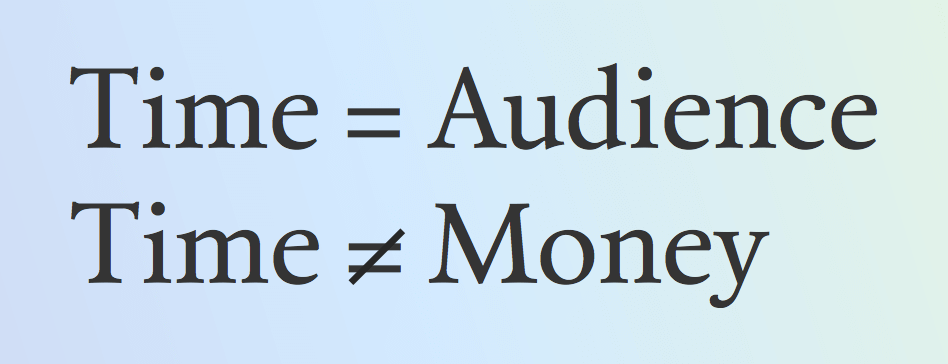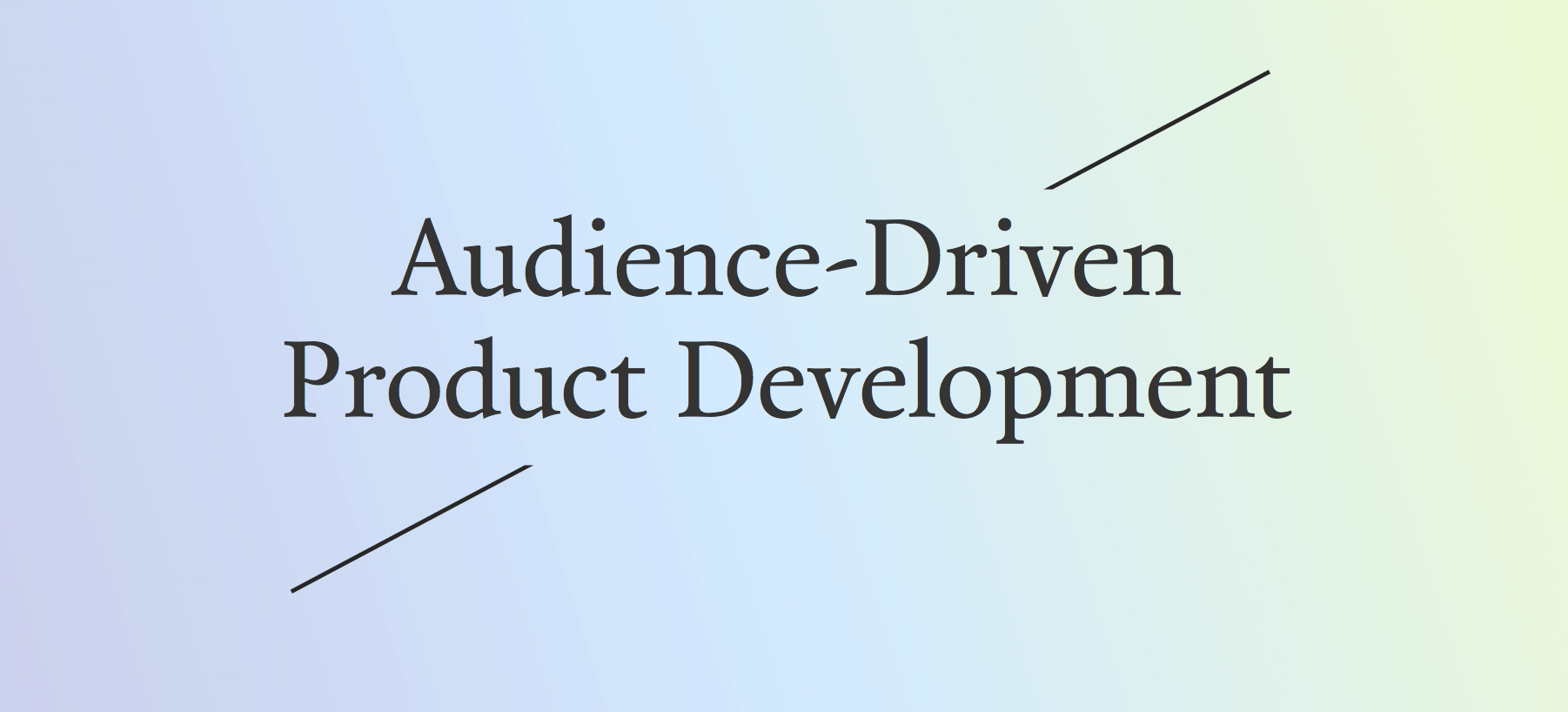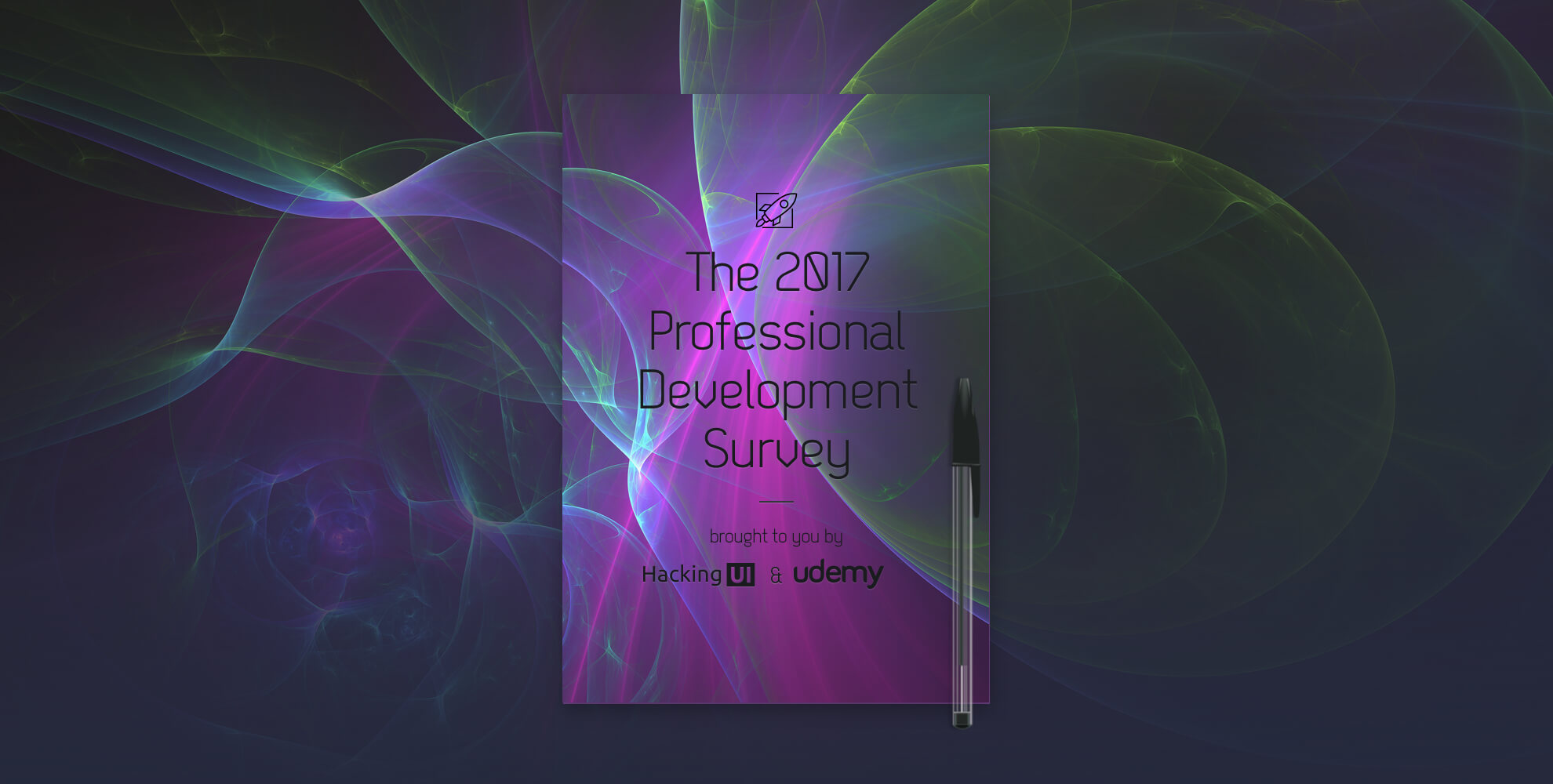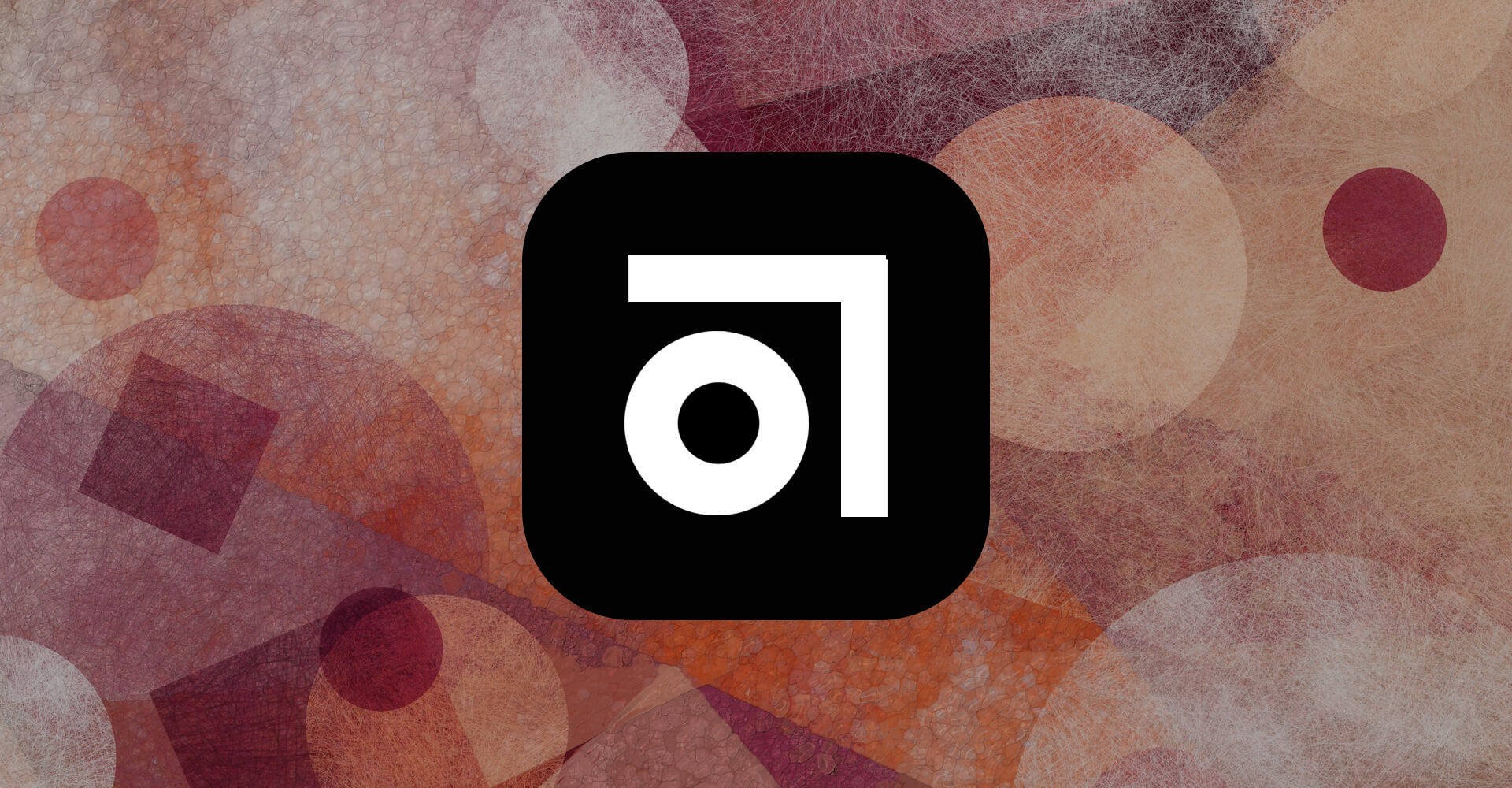This episode is available as a podcast
A side project should be developed differently than a startup.
I’ve worked on my fair share of side projects, but Hacking UI was the first time that I realized this. Over the past three years of working on it, Sagi and I tweaked and modified our philosophy to the point that I can finally say I’m pretty proud of it.
We call it “audience driven product development”.
We certainly didn’t start out with this entire philosophy in mind. This is an idea that we slowly formulated and continue to build on after interviews with successful entrepreneurs such as Jeffrey Zeldman, Paul Jarvis and Tobias van Schneider. We’ve also watched closely as companies such as Intercom and Buffer use this approach, and pulled ideas from them as well.
Audience driven product development values building an audience above all else, and treating that audience as your most valuable asset.
Basically you first build an audience and provide tons of value. Only after you’ve established a dedicated following, do you try to monetize.


How side projects are usually launched
Audience driven product development can best be explained with an example:
Let’s say you think you want to build a tool for designers. I don’t know, maybe it’s a web app that speeds up or improves their workflow in some way.
Using the traditional method for launching a product you would first do some market validation, then plan and build an MVC, start charging for it, and iterate on the product based on feedback from your customers.
This method may work well for startups, but for side projects in which you don’t have the luxury of a large team or some fat investment capital to play with, this method fails more often than not.
That’s because it’s an all-or-nothing approach. If the product fails at any of the steps along the way, you are essentially left with nothing. If your validation fails, then you don’t continue building it. If your MVC doesn’t attract users, then you don’t charge for it. If your user base doesn’t continue to grow with each iteration and new feature, then you don’t have the financial means to support development and you stop working on it.
I’ve personally used this method in two startups and countless side projects. Each product ended at a different stage, but no matter the stage, my outcome was the same. It was no easier for me to succeed with my next product, then it was before.
This is not meant to downplay the lessons learned or the personal growth I picked up along the way. I learned a lot with each project, but as far as making my future products any easier to launch in some tangible way, that just didn’t happen.
Using the audience-driven approach
Let’s look at how you would tackle that same example using audience driven product development.
If design is the field you know you want to work in, and designers are the audience that you know you want to target, then you start by establishing yourself as a thought leader.
You do that by writing and speaking about design, sharing your experiences, and creating loads of content. You create tons of value and continue to grow your audience. You can start developing a product, but as you do it you document the process, share your progress, and give your audience as much free value as you can along the way.
Of course this is not easy to do, and the downside is that it takes a ton of time. But that also forces you to ask yourself some difficult questions, such as “is this a field I’m truly passionate about”?
It also means that you are acknowledging that this will not be an overnight success. Lots of people are drawn into working on a side project because they think that it will be their ticket out, and that they’ll make millions of dollars in a few weeks. That is almost never the case, and audience driven product development accepts that upfront.
With audience driven product development, you’re investing your time in return for audience, rather than money. This is a hard concept to grasp, and is even more difficult when you are just starting out. However, the rewards are huge.


When you’ve invested that much time and energy into building an audience, by the time you actually start asking for money from them, they’ll be significantly more likely to pay you. These are the people that have been reading your articles, valuing your opinion and following your every move, after all.
These are also the people whose feedback you can trust. You can ask your audience what kind of problems they face and what kinds of solutions they are looking for. You don’t have to ask randoms on the street or pay people to join focus groups. You have direct access to a large group of people who have already proven that they are interested and are all potential buyers.
Moreover, audience driven product development mitigates the risk of working on a side project. If you build a product, and it doesn’t make you money — no problem. You’ve created a ton of awesome content along the way, given value, and increased the number of people in the world who care about what you do and want to try your next product.
When you do go and build that next product, it will be that much easier for you to make money.
Building an audience is not easy, and I don’t think there are many shortcuts. You have to provide tons of value, for a long period of time.
With Hacking UI, we began by sending a weekly newsletter, in which we curated the best design and front-end development links. We sent this newsletter every single week for about two and a half years (and continue to do so). We also gave away a free script to export SVGs from Photoshop. We then gave away UI kits, icon packs, wrote tons of articles, and created a podcast and interviewed the most successful people we knew.
Only after almost 3 years of providing value did we launch a paid membership program and ask our audience to buy it. And when that time came, they showed us support and returned the favor.


In The Side Project Accelerator, we teach you exactly how to build your personal brand, become a thought leader and practice audience driven product development. You also become a member for life of our secret community and get access to exclusive mentor sessions, Q&A sessions and bonus material.
If that sounds like something that you’d enjoy, sign up for the waiting list.





